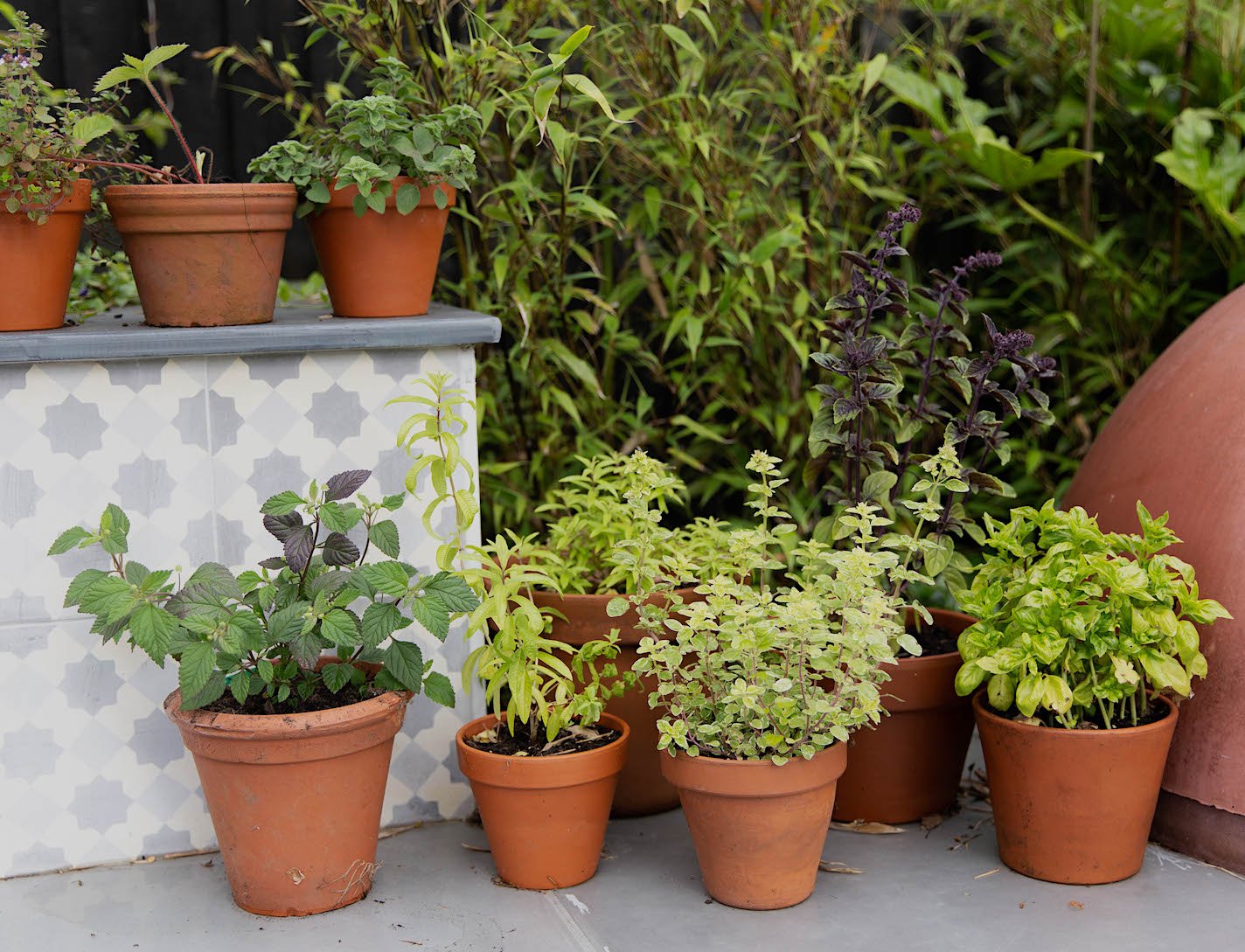How to grow herbs
Growing herbs is a great way to get into gardening if you are a complete beginner.
There are few things more satisfying than snipping off a fresh handful of homegrown herbs from outside the door, ready to use in the kitchen. Fresh basil for pesto, coriander for garnishing, mint for cocktails… …it’s a cliché but true: they really taste better homegrown!
Many herbs are fast to grow (so you can pick and use them within a few months of sowing seeds), grow well in small spaces (so they’re perfect for growing in pots), and take relatively little maintenance.
Here’s our overview on everything you need to know to get started.
Location
All herbs grow best in a light and sunny spot (they will need at least 6 hours of direct sunlight in summer) and they need fertile soil with good drainage. This is very easy to achieve in a pot.
Many herbs actually do better in a container than being planted directly into the garden because their prolific nature can be contained. You can also place them right next to your kitchen for quick cooking access!
As a general rule, five to ten litre pots are a good size for most herbs- anything smaller will dry out very quickly. Make sure the pot has a drainage hole and then fill up with multi-purpose peat free compost before adding in your herbs of choice- I prefer to keep different herbs separate in their own pots as vigorous herbs can easily out compete smaller species (such as thyme) in a pot.
Always grow mint in a pot away from other herbs and plants, as it is a very fast-growing plant, that will soon take over.
Planting
You can buy small pots of herbs cheaply from a huge range of places: garden centres, plant nurseries, even growing in supermarkets. If you’re planting out a pot grown plant, carefully separate out individual plants from within the original pot, and give them plenty of space. Especially if you’re planting out something bought from a supermarket, they tend to cram a lot of plants into a small pot!
Most herbs germinate and grow quickly from seed too, so this can be the cheapest way to get a lot of plants. Basil, coriander, chives, parsley and dill are all really easy to grow from seed. You can start them off inside in the early Spring and move them on to their final position after the last frost, or just sow directly in place in May.
It’s a good idea to grow plenty of plants – particularly of herbs such as basil or coriander, when you use a good handful at a time. If you have a lot of plants, you can cut the tops from a few different plants at a time, leaving the rest of the plant to carry on growing.
Woody perennial herbs, such as thyme and rosemary, tend to be used in a different way: a small section of stem and leaf used in cooking, for example, so for these, one established plant is usually sufficient.
Care
Keep the pots well-watered in dry weather, particularly when they are newly planted. Pick your herbs regularly during the growing season and harvest just the tips of each stem – the top inch or so, above a pair of leaves. New shoots will then grow from each stem, creating a nice bushy plant. Picking stems from the base of the plant will cause weak, straggly plants.
Herbs in containers will need feeding while they are growing. A liquid seaweed (available from all garden centres) is best, as it is packed with trace elements and minerals that will help the herbs thrive and retain good flavour.
The varieties I have suggested below are all hardy, very easy to grow, will come back each year and can be grown in pots so are great for small gardens or even sunny balconies.
Our favourite herbs for pots
Rosemary, sage and thyme
These three Mediterranean staples are all very easy to grow and will be happy in pots in a sunny spot.
You can grow the common bush form of rosemary or the smaller low-growing, prostrate rosemary if you are short on space.
Purple sage is my favourite sage variety to grow. It looks really attractive and can be used in cooking the same way as regular sage.
Try growing both regular and lemon thyme for a citrusy variation that is great with chicken.
Chives
Brilliant in salads, soups, or added as garnish to many dishes. The edible flowers provide a welcome pop of colour in the spring, taste delicious – and the bees love them too. Make sure the pot doesn’t dry out, as chives like damp soil.
Basil
Using fresh basil in meals always makes me feel like I’m on holiday in Italy! Easy to grow on a sunny windowsill, or in a pot in the garden, keep it close by where you can grab a handful whenever you need.
Mint
I’ve saved the best for last; mint is my absolute favourite herb. Super easy to grow, really versatile for cooking or cocktails, tastes delicious and – best of all – the easiest herb there is to propagate.
It’s always best to grow mint in a pot, as it can really take over if it’s growing in the ground.





